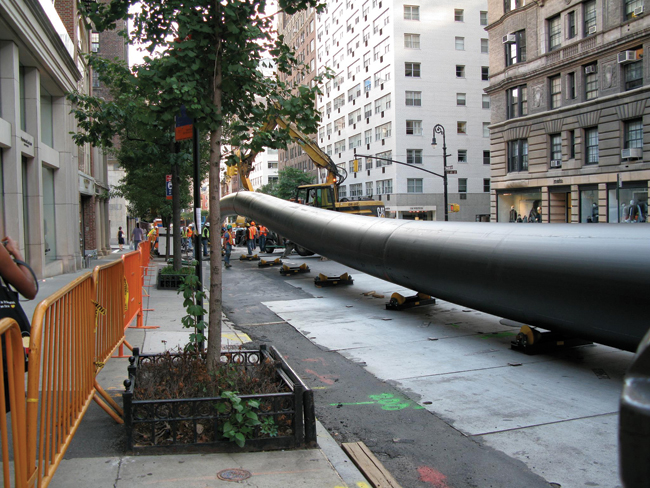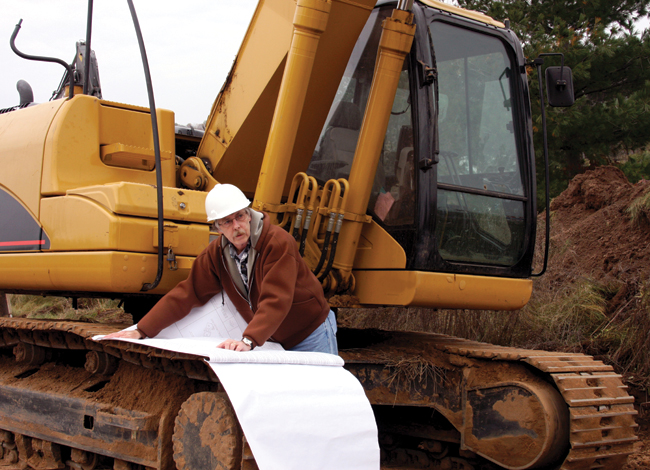Utility Construction Outlook
While the broader construction industry struggles through the worst recession in everyone’s lifetime, executives of utility infrastructure firms have much to be thankful for. Utility construction firms have been spared the severity of the industry decline that has many E&C firms fighting to stay in business.
How severe has the industry downturn been? Residential construction declined 78 percent from 2007 through 2010. Total nonresidential building construction spending declined 28 percent over the past two years. Total construction put in place in the United States has declined from a high of $1.2 trillion in 2006 to $840 billion in 2010, a decline of approximately $360 billion or 30 percent. That equals a decline greater than the individual annual economic output (GDP) of 36 states.

How do utility infrastructure sectors compare? Power infrastructure spending increased 89 percent from 2007 through 2009 and then declined a mere 1 percent in 2010. Highway and street construction (includes significant utility infrastructure) has increased 15 percent, water and wastewater is up 11 percent and water supply is up 8 percent during the same period. Telecom infrastructure spending is up over 10 percent and is poised to explode in 2011.
Telecom
Increased capital investment is taking place across the board by major telecom and wireless service providers, telecom holding companies and rural electric and telecom utilities. The two main business drivers of capital spending are the persistent trends of competition and convergence — competition between legacy telecom and broadband (CATV) industries as they compete for the same customer base in a deregulated market and convergence as voice, internet, video and increasingly wireless services are delivered by a single provider over fiber-based IP infrastructure. Consumer demand for video-based data applications over both fixed and mobile devices continues to force carriers to upgrade their networks.
Two federal programs administered by the National Telecommunications and Information Administration (NTIA) and the United States Department of Agricultural (USDA) have awarded between $6.6 and $7.5 billion of grants and loans to companies in underserved markets to upgrade their communications infrastructure to minimum broadband standards. The majority of this investment is going toward expanding high bandwidth fiber-optic network infrastructure from the transmission point to at or near the end-user premise (referred to as FTTH). The federal requirement is that 100 percent of the allocated funds be spent within 36 months of grant date. The clock is ticking and the first significant stimulus dollars began hitting the street in the first quarter of this year. As a result, prices will rise as accelerating demand begins to outpace the availability of quality labor.
On the wireless side, the proliferation of wireless data and emerging 4G (broadband) services mandate that wireless service providers expand the capacity of their networks by building out fiber-based backhaul to carry exponentially greater traffic, building more cell sites and upgrading their technology. Demand for wireless site development, engineering, civil construction, line and antenna and EF&I services are in strong demand.
Natural Gas
The long-term outlook for natural gas pipeline construction remains robust. New infrastructure must be built to meet sustained and growing demand for natural gas, population growth and changes in location of oil and gas production. There are currently 28,000 route miles of natural gas pipelines planned or under construction. Significant new infrastructure is required to accommodate new or expanded production in shale and oil sands fields such as the Fayetteville Shale (Ark.), Barnett Shale (Texas) and Marcellus Shale (W.Va. and Pa.). New gas-fired generation is steadily overtaking coal as the nation’s primary generation fuel and is a major driver in new gathering, storage and transmission infrastructure. More importantly, much of the nation’s gas gathering, transmission and distribution infrastructure is aged and requires replacement.
Water and Wastewater
The EPA estimates approximately 7 billion gallons of clean drinking water are lost to leaking pipes daily. The total estimated cost to replace aged and inefficient water supply infrastructure over the next 20 years is approximately $390 billion. Annual water supply construction has grown from $8.6 billion in 2000 to $16 billion in 2010, but is far short of what is needed to address the problem. In the short-term, the economic recession has led to flat spending as municipal governments face revenue shortfalls and tight credit markets. However, by 2014, water supply construction is anticipated to grow to $20 billion annually.

Wastewater construction tripled from $3.3 billion in 1999 to $10.3 billion in 2009. Wastewater infrastructure spending will continue to grow as thousands of municipalities are under pressure to increase spending to upgrade wastewater infrastructure to meet these new standards.
Challenges Facing Utility Contractors New Competitors
The relative strength of the utility infrastructure markets has not gone unnoticed by complementary trades in the heavy civil sectors. As a result, various segments such as high voltage transmission, substation, solar, wind and water and wastewater are seeing new or return competitors enter the market. It is typical for underground contractors to see 15 or more bidders in markets where traditionally there were only three to four participants.
Irrational Pricing
Increased competition, often from new market entrants responding to shrinking backlogs, can lead to irrational pricing. Having a firm handle on costs, adjusting overhead to reduced gross margins, and most importantly, remaining pricing disciplined, is key to weathering periods of irrational pricing.
Unsympathetic Banks
The United States economy may technically be out of recession, but the banking crisis is far from over. In 2010, 157 commercial banks failed, up 19 percent from 2009. Unfortunately, many banks are restricting their lending to contractors. It is common for a bank to call a contractor’s loan or refuse to renew its line of credit, thus precipitating a financial crisis for the contractor. If the bank fails and is taken over, all bets are off for the contractor.
Municipal Budget Shortfalls
By far the biggest immediate threat to sustaining the health of the water and wastewater market is the budget deficits of states and municipalities. Municipalities are slashing spending in face of severe revenue shortfalls and are often unable to fund capital projects through traditional bond offerings. Public private partnerships (P3) offer one way to fund critical new infrastructure projects; however, many states lack the appropriate legislation to allow state and municipalities to structure P3 deals.
Wm. Chris Daum is senior managing director of FMI Capital Advisors Inc., the investment banking group of FMI Corp. He specializes in mergers and acquisitions and strategic advisory services to utility infrastructure firms throughout the United States and Canada. He can be reached by e-mail at cdaum@fminet.com.

Comments are closed here.